Did NYC's Celebrity Redhead Duck Find Mallard Love?

Between December 30 and March 16, a strikingly plumaged drake Redhead duck resided on a small body of murky water—somewhat over-grandly dubbed The Pool—near Central Park’s northwest corner. He made himself quite comfortably at home, odd duck out, amid a flock of noisy Mallards and drew obsessive attention from hundreds of birders and photographers during his stay.
Eighty percent of his species’ global population (several hundred thousand ducks) winters on the Laguna Madre in south Texas, where the birds spend sunny winters diving in those shallow, salty waters to feast on the foliage of underwater plants called seagrasses, which are not grasses at all but distant marine cousins of Jack-in-the-pulpits and that Monstera deliciosa plant in your window. Most of the remaining Redheads overwinter in similar environments in northern Mexico, coastal Louisiana, and coastal Florida, with just a handful, relatively speaking, scattered across the rest of the continent.
Of those few Redheads that overwinter in the Northeast and Mid-Atlantic, most prefer shallow coastal bays and salt ponds or larger inland water bodies like the Finger Lakes.
All of which is to say that Redheads do not appear often in Manhattan; in fact, before this winter, the last sighting was a single bird on a single day in February 2018. The opportunity to observe this year’s bird through an entire New York winter was a rare one, enabled by a mild season that kept our inland waters mostly ice free.
Winter is an important season for ducks: Most migratory North American ducks form pair bonds on their wintering grounds, after which males follow their mates north during spring migration to inseminate them on the breeding grounds ... and then quickly ghost them. Ducks are sexually aggressive and promiscuous (phrases like “forced copulation,” “phallus length,” and “egg dumping” are common in studies of their social and reproductive behavior), and they hybridize frequently across species boundaries.
One of the reasons ducks hybridize is that isolated individuals wintering among birds of a different species from their own might pair up with—or force themselves upon—members of another species.
So, I watched Manhattan’s celebrity Redhead with some interest as winter wore on, to see what behaviors he might demonstrate as his sex hormones rose with the lengthening days. (Changing day length is a major driver of hormonal shifts in many birds, stimulating plumage changes, song, reproductive behavior, etc.)
Near the solstice in December, when the northern hemisphere is tipped far away from the sun, the length of each day changes only a few seconds from one to the next; the word solstice, in fact, comes from Latin words referring to the sun standing still. But by mid-January, day length is growing by more than a minute per day, and by Imbolc in early February, by more than two minutes per day—a steep rate of increase!
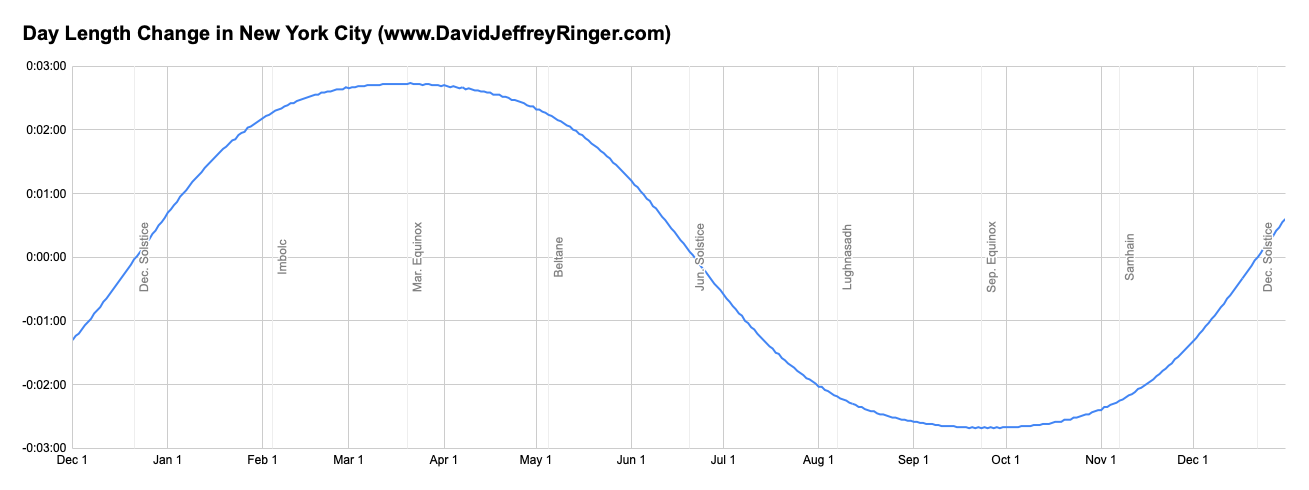
The pace of this change in daylight has cascading impacts throughout the natural world. It is why, for example, we hear Northern Cardinals and House Finches starting to sing in very early February, during some of the coldest days of the year.
And sure enough, by mid-February, Manhattan’s resident Redhead was swimming after female Mallards on The Pool, showing interest he hadn’t shown in the darker depths of winter. By early March, he was starting to perform his species’ courtship displays toward the strange hens.
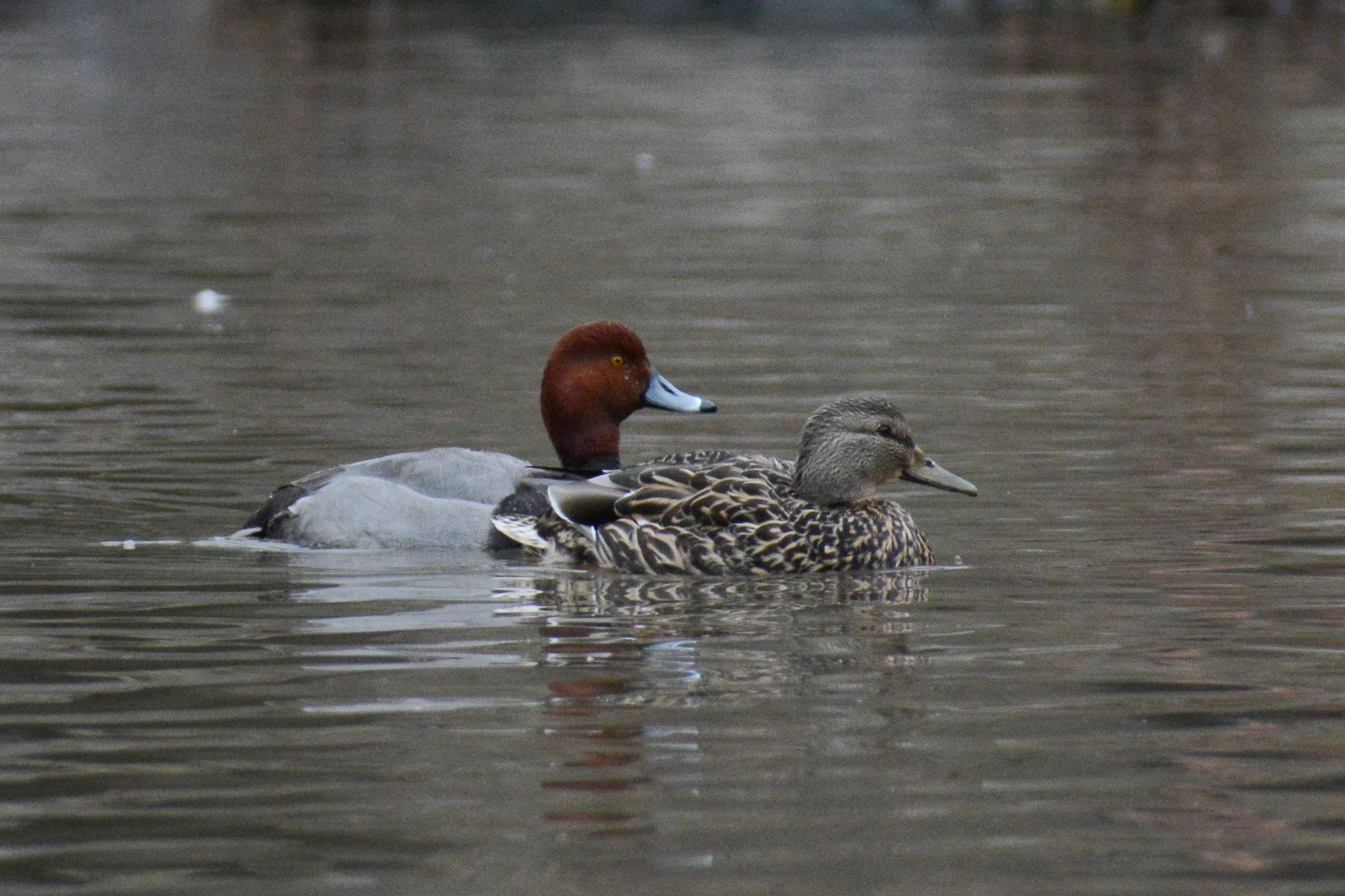
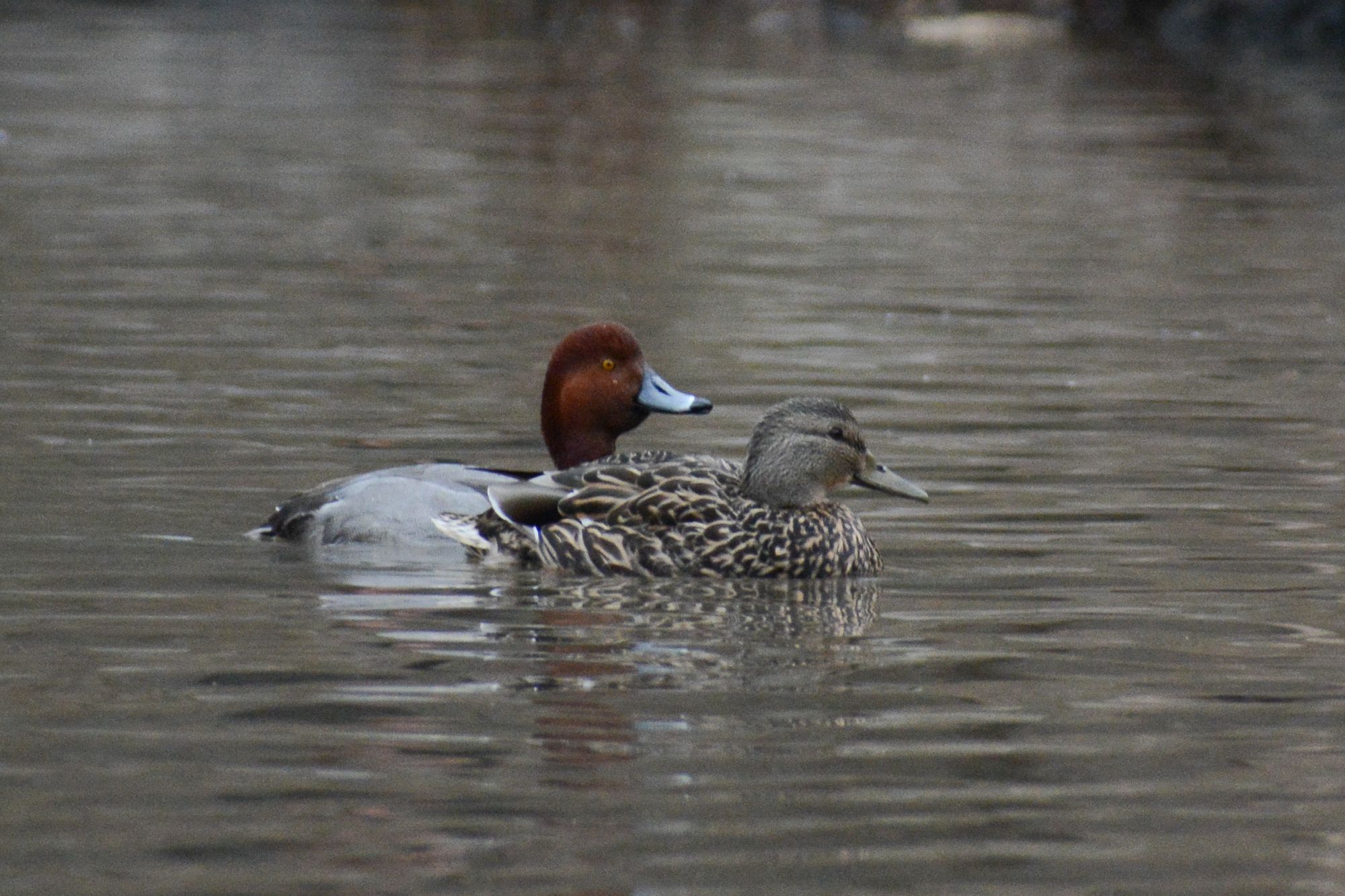
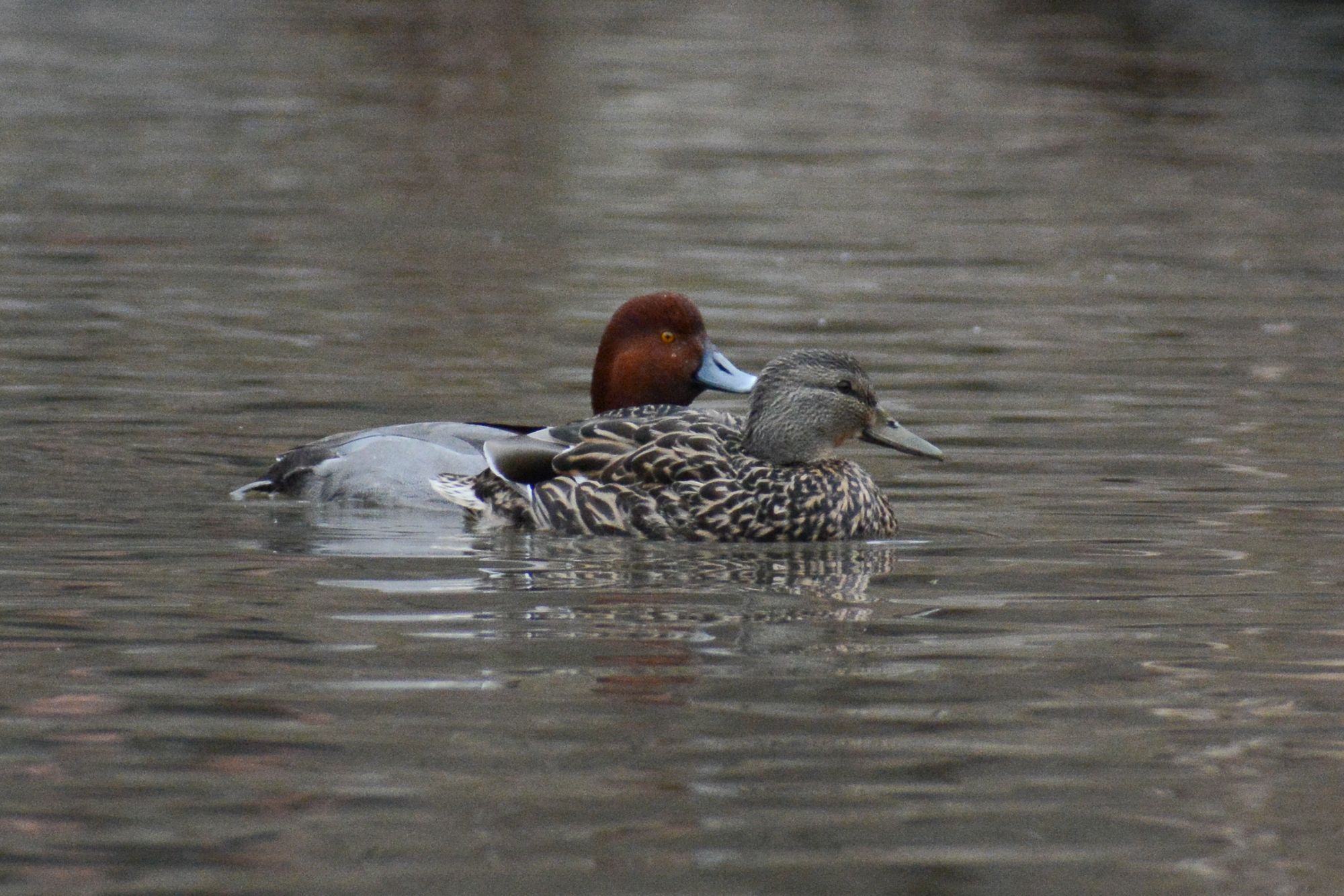
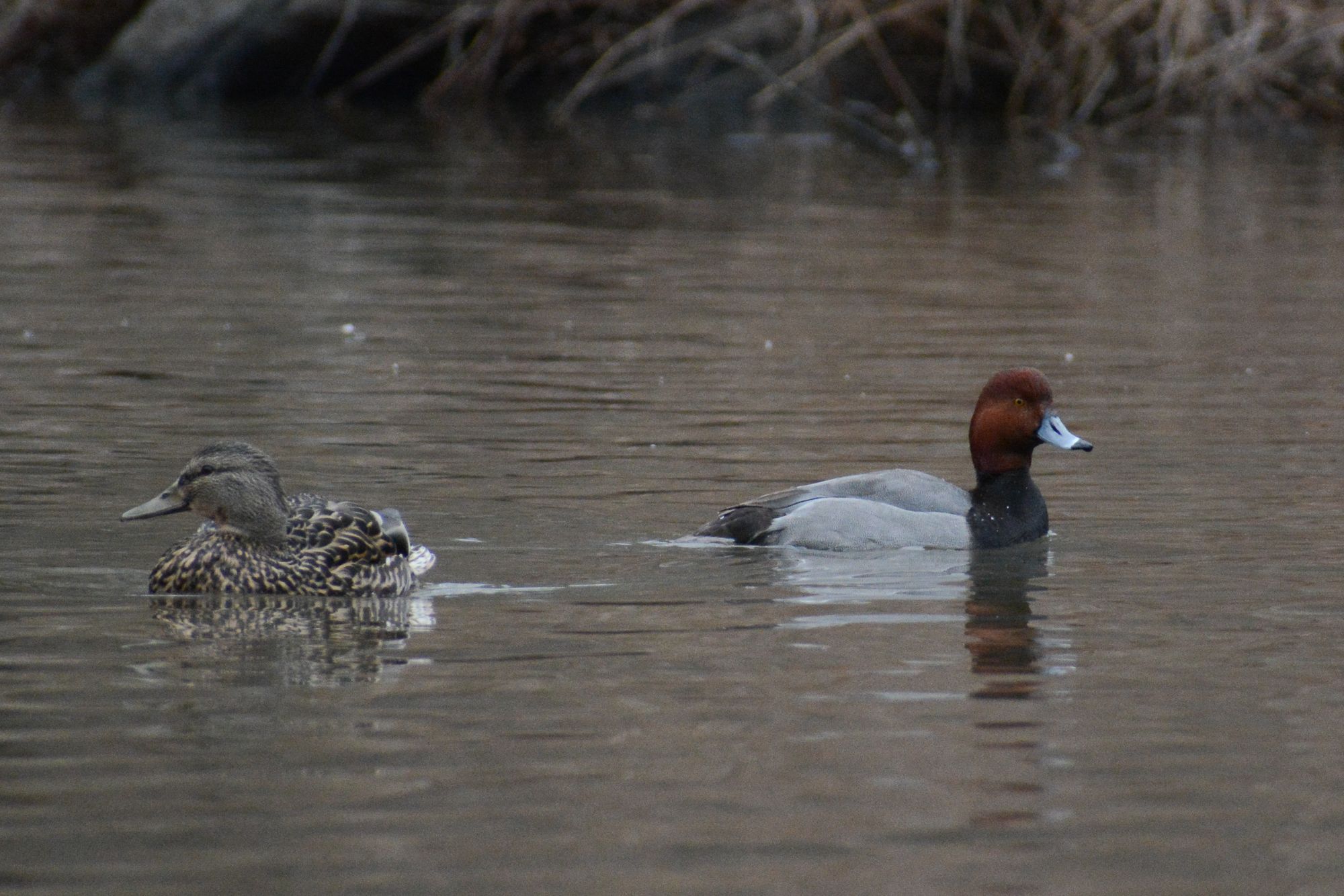
One such display, the “kink-necked” display, involves puffing up the feathers of his head, contracting his pupils, and giving a soft mew call. I saw him perform this display several times in the company of female Mallards. I also saw him perform his spectacular “head-throw” display, during which he quickly snapped his head backwards toward his tail.
However, despite all this effort, none of the female Mallards seemed remotely interested, as far as I could tell.
Mallard × Redhead pairings are rare; one such hybrid was photographed in Massachusetts a few winters ago. Among other challenges, time is not on a wayward Redhead’s side. Mallards tend to form pair bonds in the fall, stimulated by shortening day length, whereas Redheads tend to form pair bonds through the winter into early spring as the days lengthen again. Most of the female Mallards on The Pool this winter were already paired up, so the Redhead would have been looking for a unmated female, a female willing to engage in so-called extra-pair copulation, or a female on whom he could forcibly advance.
I never saw any evidence that he succeeded, and on March 17, he was gone, perhaps to try his luck in waters we can only hope are more fruitful to the north.
For each of the birds we come to know, whether for a season or a fleeting moment, we must make peace with their inevitable departures and unfinished stories, wishing them well and thanking them for the gifts they gave us.
One such gift: As I watched the Redhead interacting with Mallards this winter, I began to realize that I’ve been both overlooking and misinterpreting some of the variation that occurs in Mallards and Mallard-like ducks in our region.
Mallard × American Black Duck is one example of a hybrid duck that we see fairly frequently in New York City; at least two such individuals spent much of the winter in Central Park this year. Males of this hybrid combination show traits intermediate between their parent species: partly green heads, blackish or sooty flanks, and half-curled tail feathers, but each individual looks a bit different.
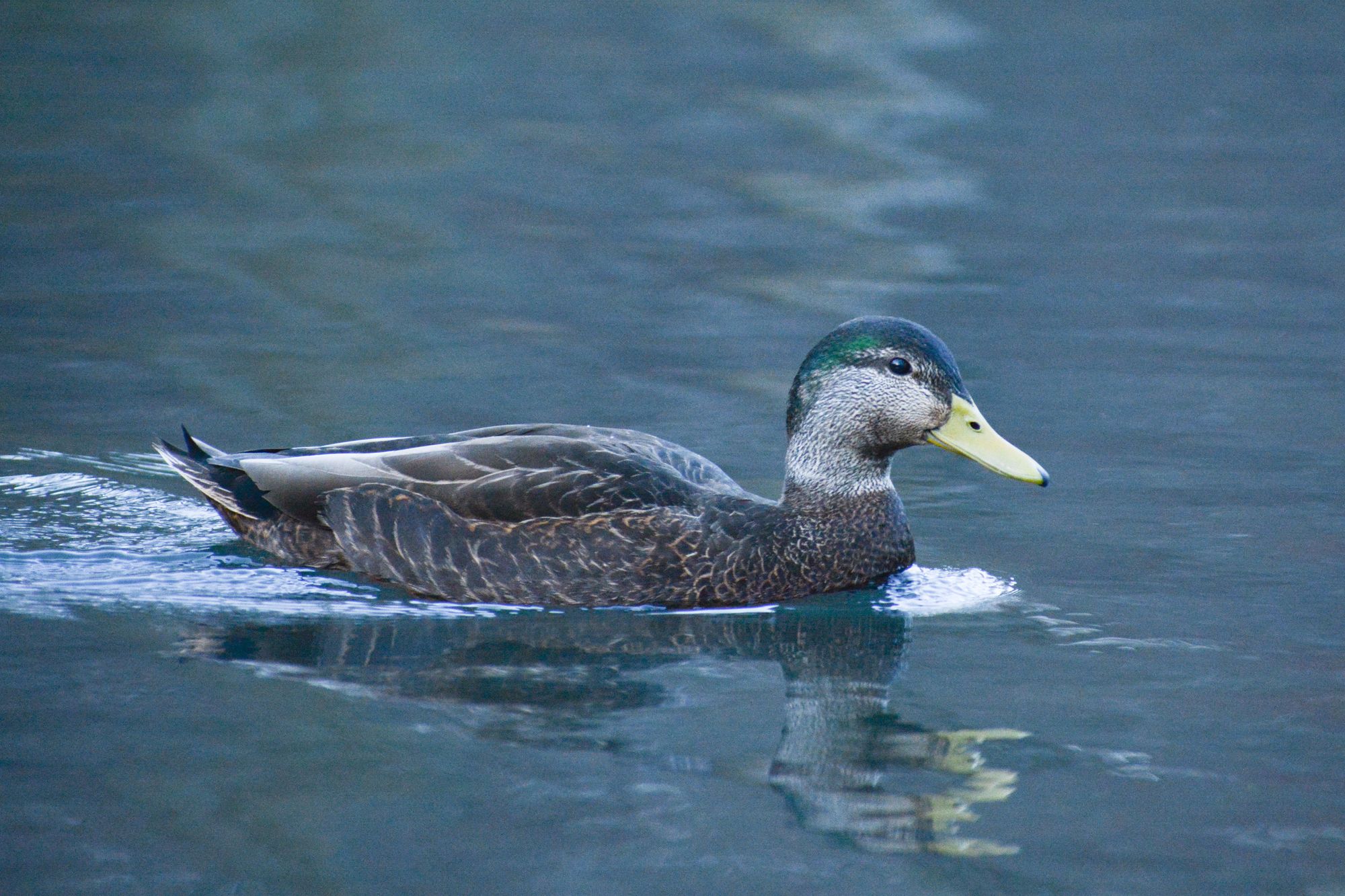
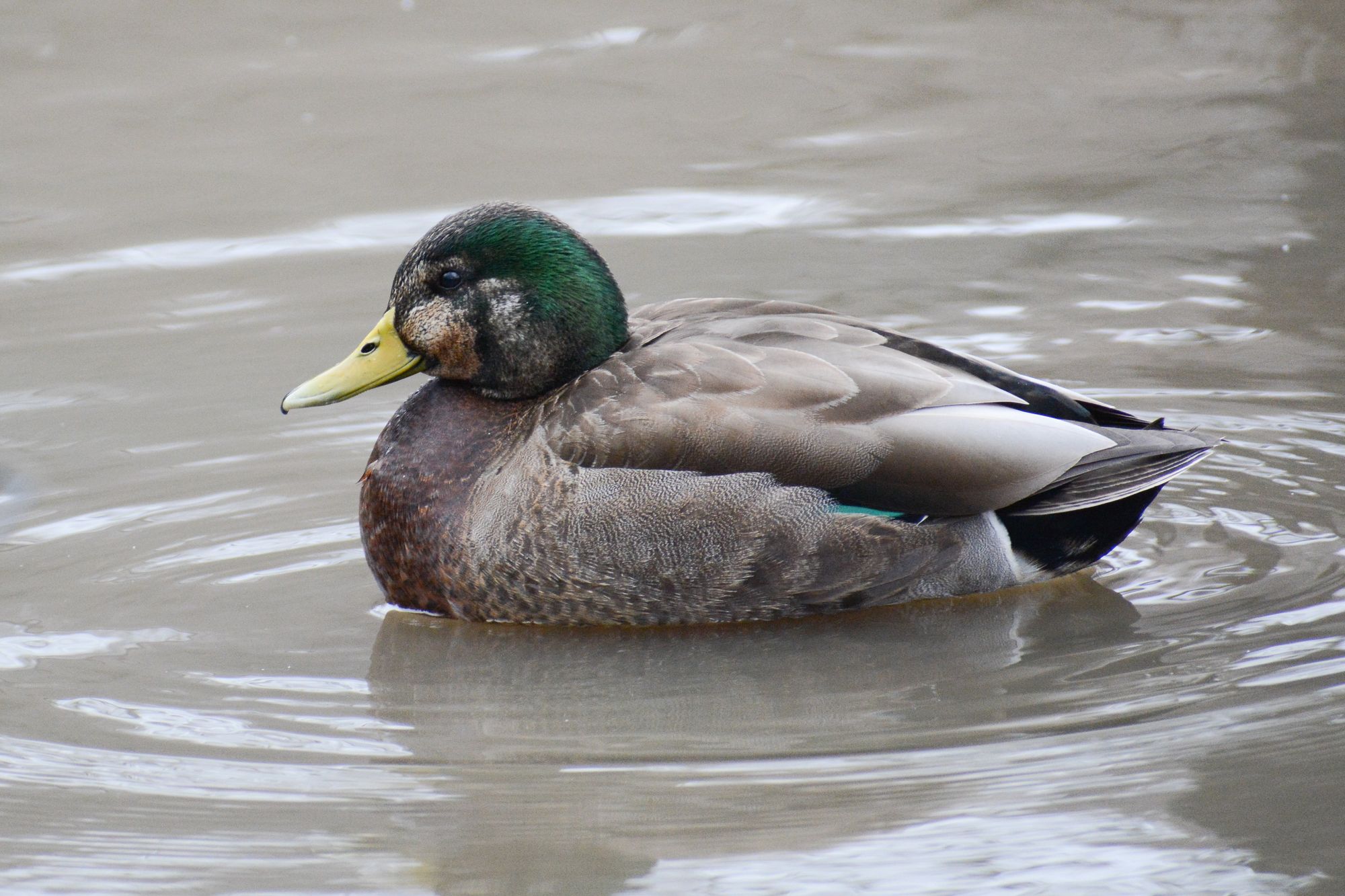
We also see a few “domestic” ducks, colorful and oddly-shaped breeds selectively developed by human beings from wild European Mallards and/or tropical American Muscovy Ducks over many centuries for meat, eggs, show, companionship, and the like. Free-living domestic ducks are familiar residents of park ponds and marinas across the country after escaping from or being abandoned by people.
In New York City, domestic-type ducks are not so common nowadays because park rangers often catch them when they are dumped in our large, high-profile urban parks and take them to Wild Bird Fund for medical care and re-homing. However, in more out-of-the-way locations like Manhattan’s currently derelict 79th Street Boat Basin on the Hudson River, tenacious domestic ducks persist against the odds. (I should say here clearly that domesticated animals should not be abandoned in the wild—it is no kindness to them or to native animals—nor should ducks be fed bread, which is harmful to them.)
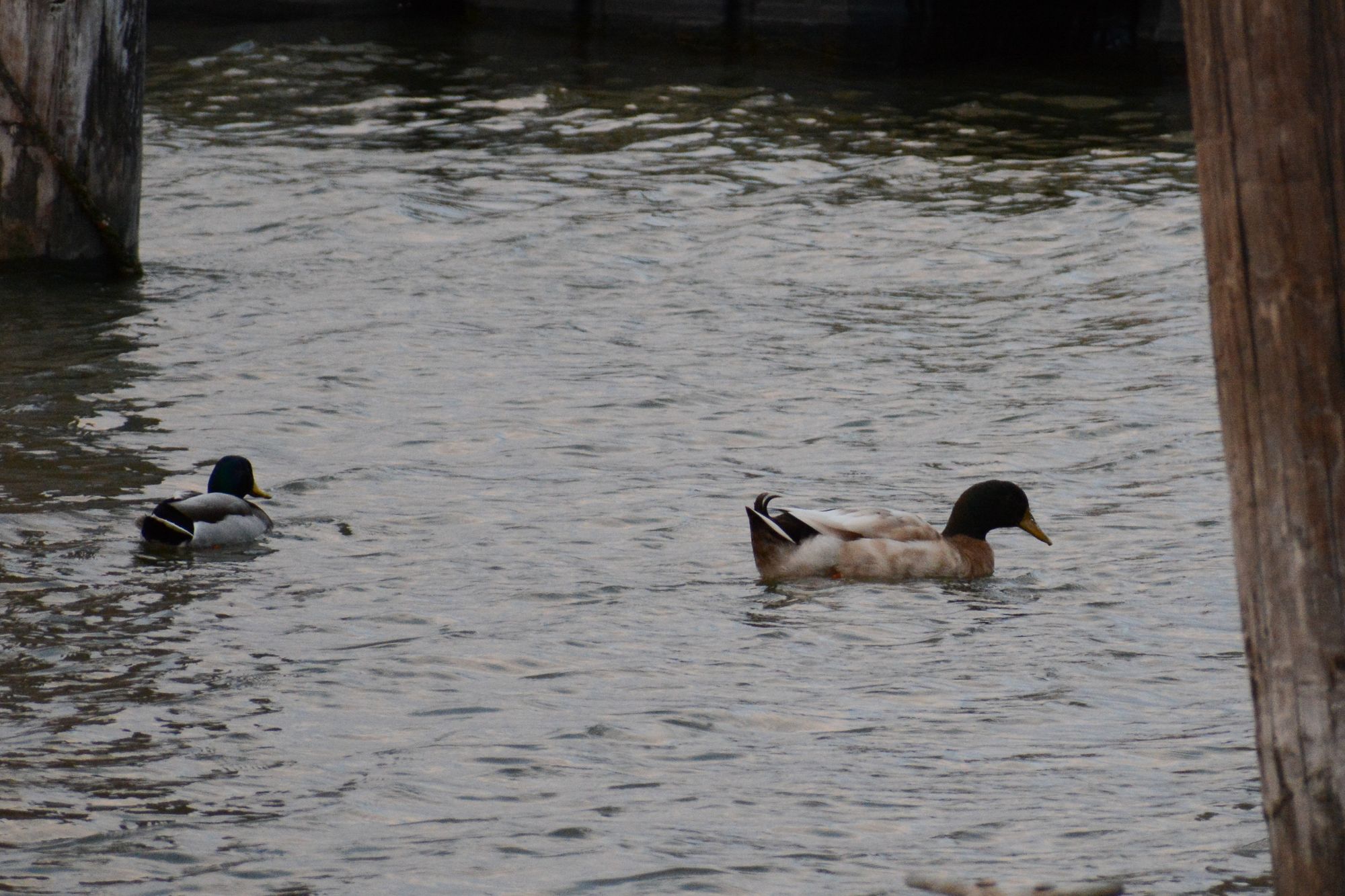
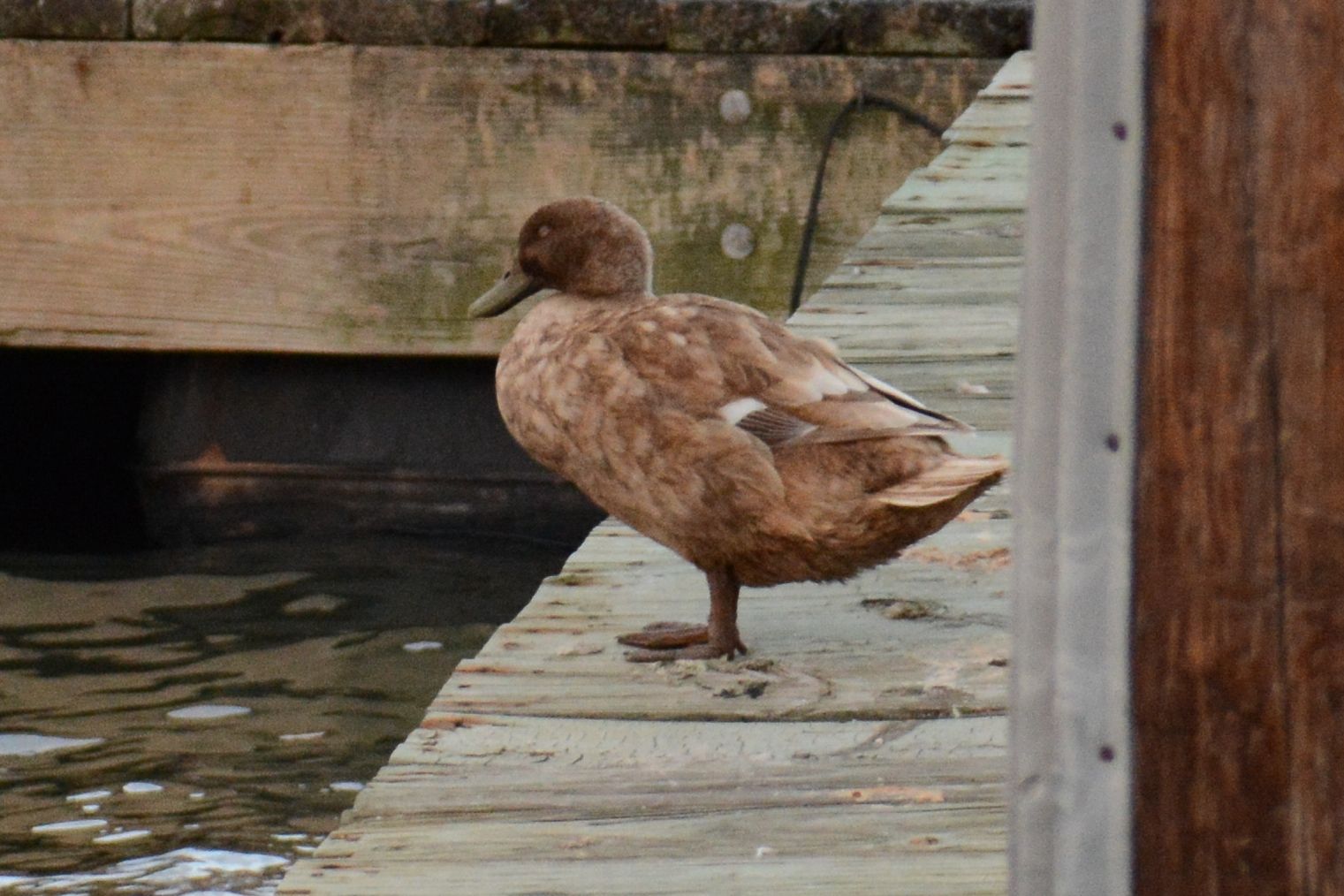
Beyond these two categories—Mallard × American Black Duck hybrids and obvious domestic breeds—a close look at flocks of wild-appearing Mallards in New York will reveal some additional variation that is not easy to explain; for example, hens with unmarked olive bills (instead of the typical black-saddled orange bill) and drakes with silvery breasts, missing white collars, or more brown than expected in their breeding plumage.
Such birds are impossible to label in the field, and I realized this winter that I have been too quick to call them “domestic” or “hybrid” ducks in the past. Some may in fact have a few genes from a hybrid ancestor or domestic-breed ancestor. Some may be older females or younger males—both youth and age can alter birds’ appearance. Some may just have genetic quirks all their own. And in any case, more than 90 percent of wild Mallards east of the Great Plains are actually the descendants of game farm-bred European Mallards released in a 20th-century effort to expand hunting stocks—the preceding link is a fascinating podcast.
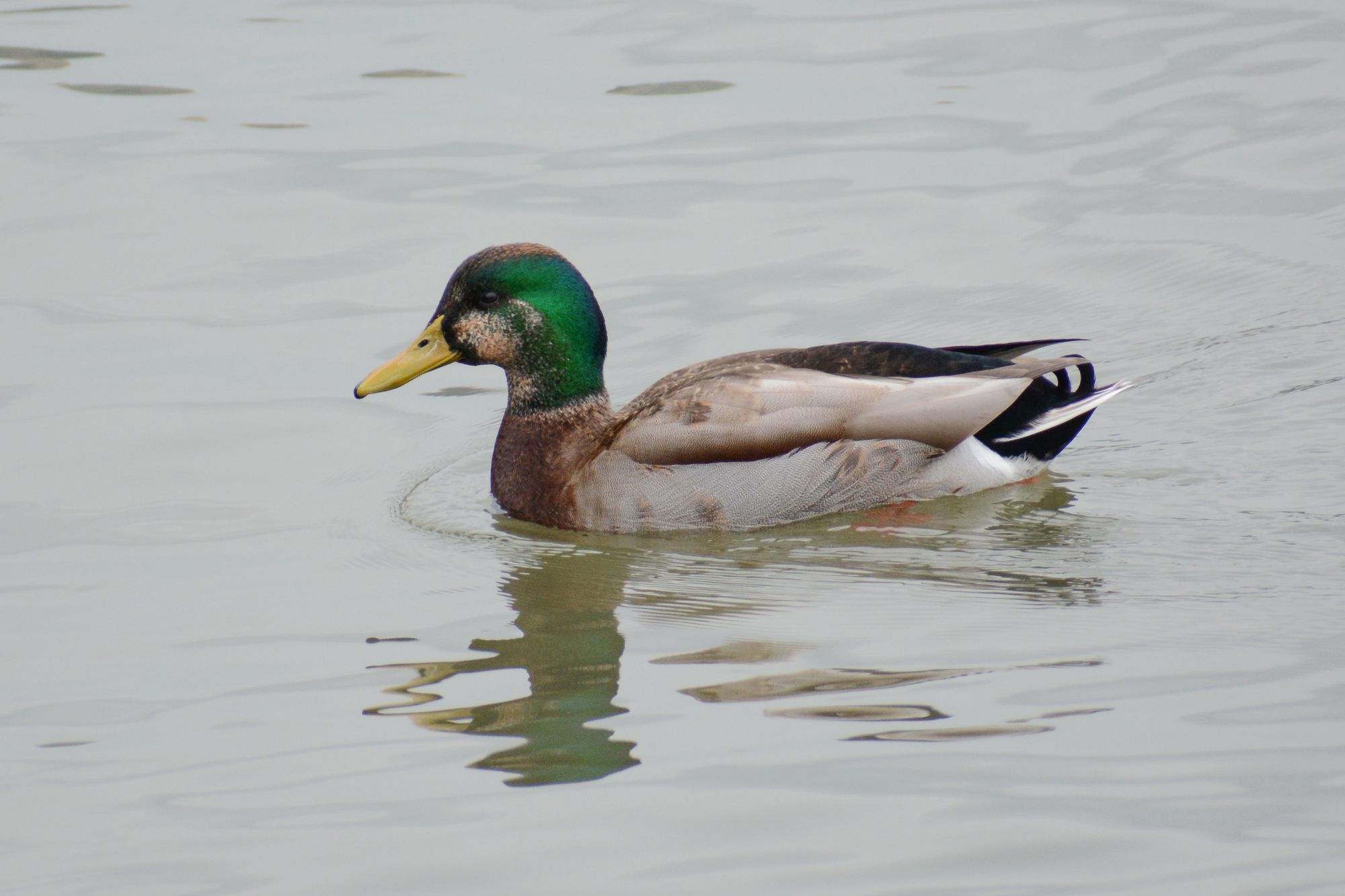
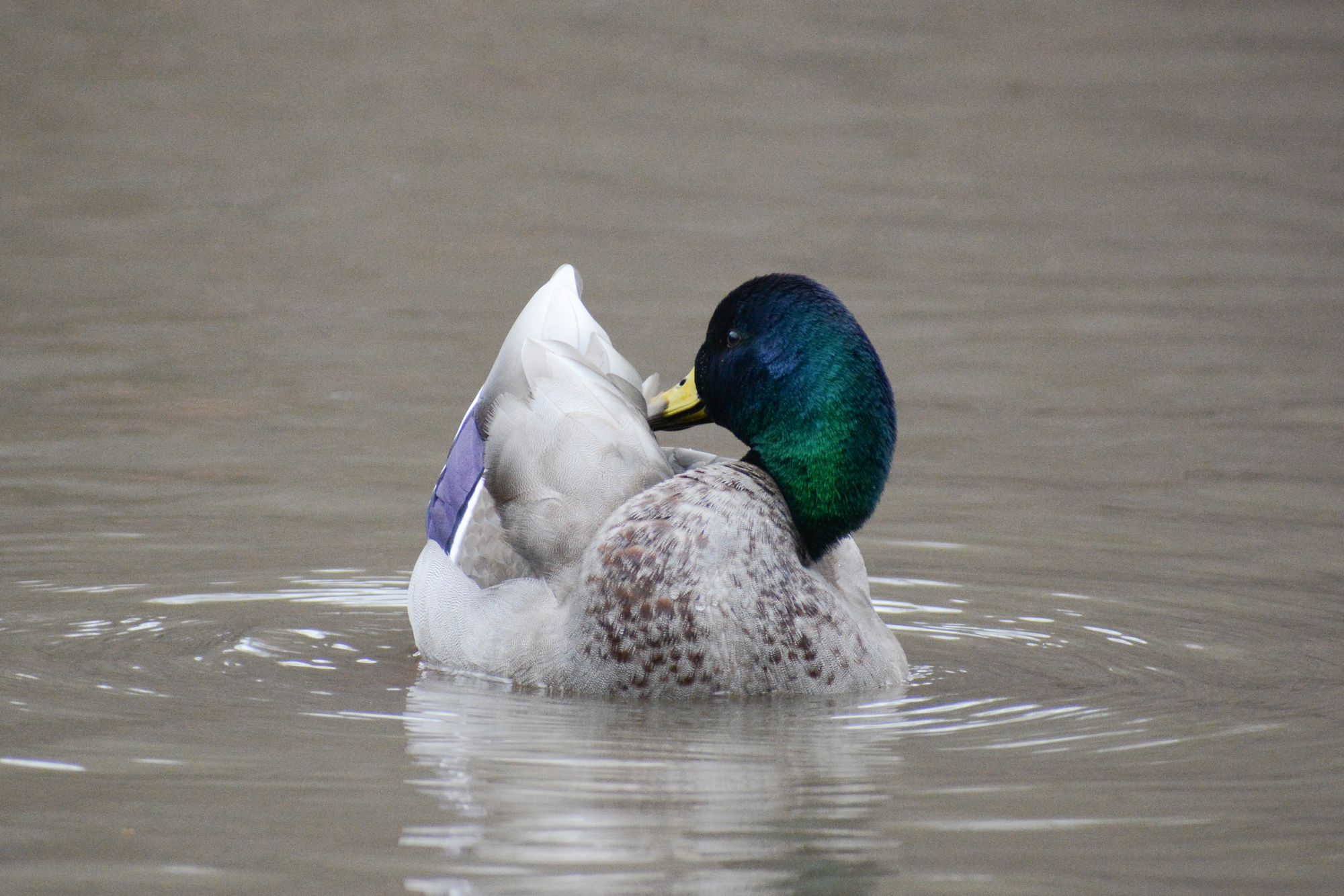
Now, the days of ducks and geese are dwindling fast. They are quickly moving north, with dozens of other species hot on their tails: Spring migration has begun. The ducks are leaving, and the warblers are coming.
Member discussion